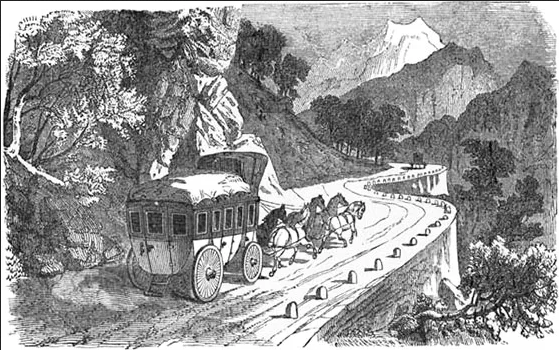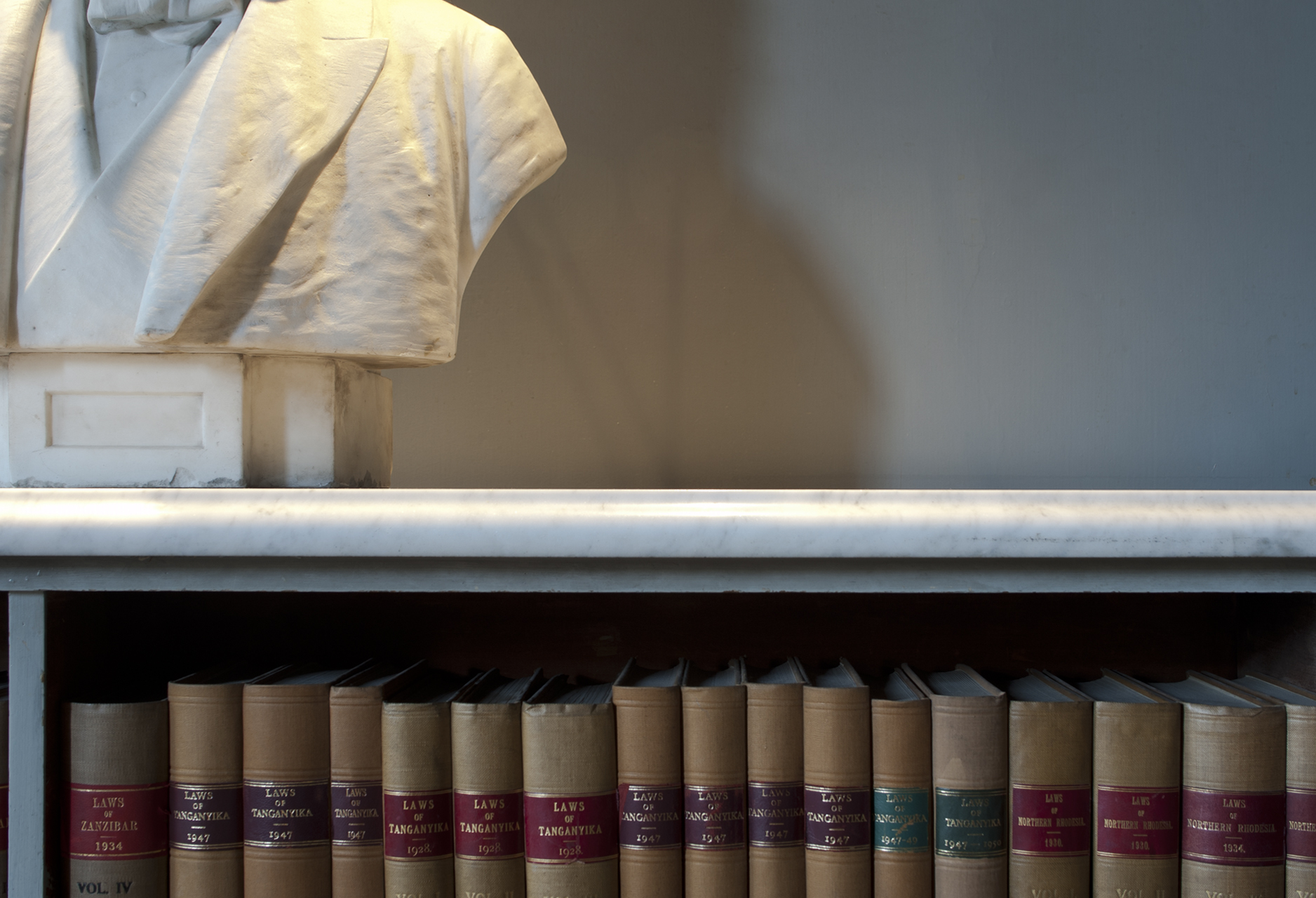Introduction
Robert Pitcairn WS (1793-1855) was at the heart of Scottish cultural life in the final years of the Scottish Enlightenment. He was a friend of Sir Walter Scott, a member of the Society of Antiquaries in Scotland, and part of the group around James Maidment in the Bannatyne Club and other intellectual societies that led the editing and reprinting of countless key Scottish historical works. For much of his career he acted as assistant to Thomas Thomson, the Deputy Clerk Register at Register House, the home of Scotland’s national archives. This was not always a happy arrangement, with Pitcairn at one stage involved in a complaint to the Commissioners on the Public Records as to promises made him about pay and remuneration. From 1853 he was one of four official searchers of the national records for incumbrances.
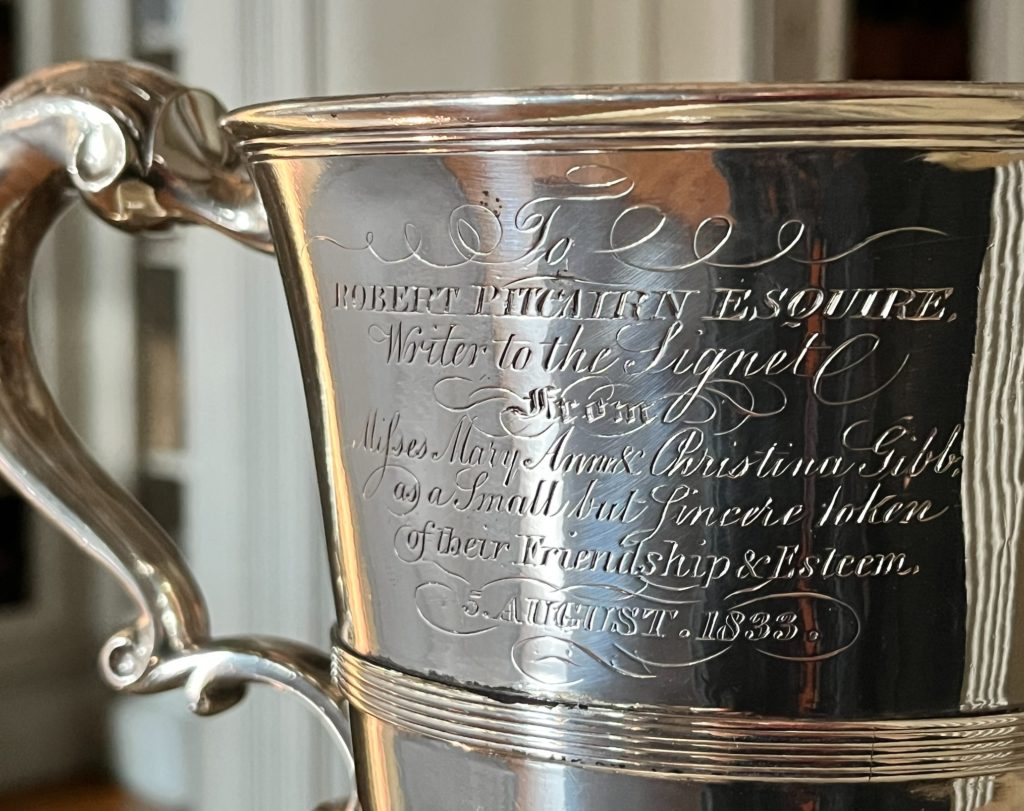
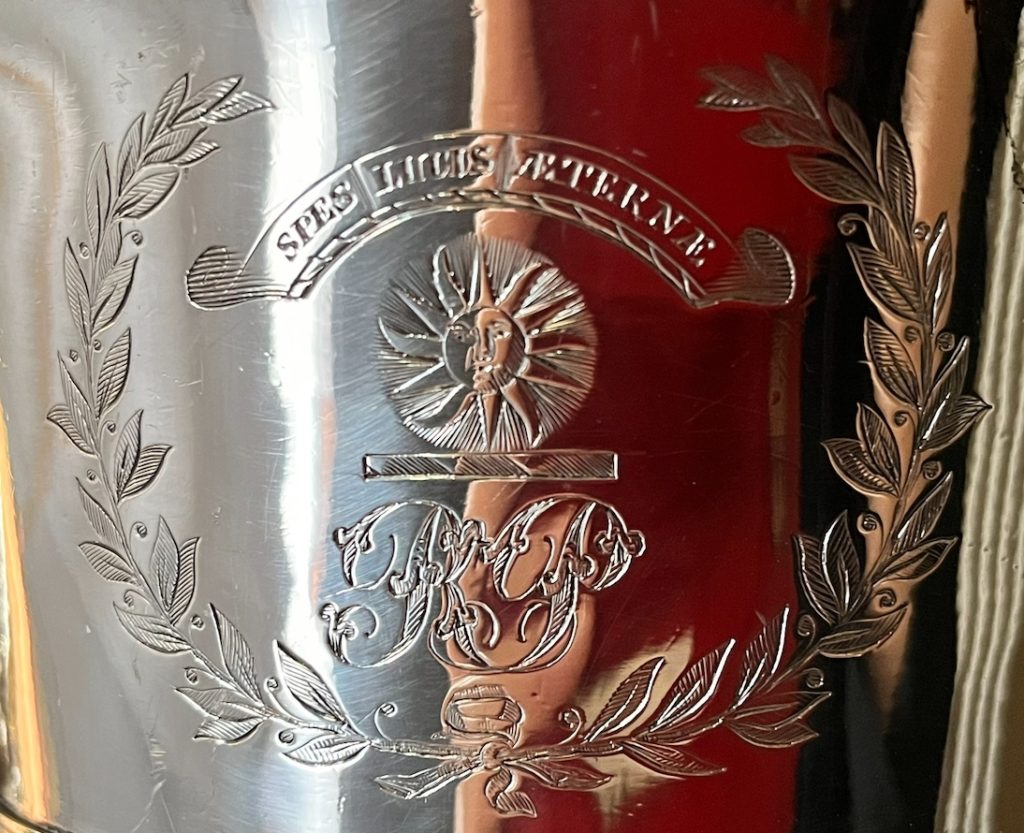
A cup presented to Robert Pitcairn in 1833, the year after his Diary journey.
Robert Pitcairn’s European Journey, August and September 1832
This pair of volumes tells the story of Pitcairn’s midlife journey across central Europe and dates from the height of his career as an author, lawyer and historian. His travels began in July 1832 with an eye-witness account of Belgium amid its war of liberation against the Netherlands, a conflict that would end with the declaration of Belgian independence in 1839. The journey would take Pitcairn through France, parts of what is now Germany, Switzerland and as far as the Savoy in the Western Alps.
It is not known whether Pitcairn intended the diaries for publication, and this is their first appearance in any published form. He was already a published historian, and 1833 would see the appearance of his greatest work, Criminal Trials in Scotland from 1588 to 1624 which appeared under the aegis of the Bannatyne Club and which inspired Sir Walter Scott’s Ayrshire Tragedy. It is still considered a useful and significant source today.
Pitcairn is no Boswell, but he is an interested and observant traveller who makes considered and generous comment on everything he sees and is prepared to take pleasure – for the most part, at least – in what he experiences: the Europe he passes through has since been radically reshaped and reordered by conflict and social change and his account is a valuable one. Above all, this is a Europe before the coming of modern industry and the railway: it is still very much a Georgian Europe in that sense and one that Pitcairn experiences at a pre-industrial pace and with pre-industrial attitudes.
After the Journey
Following Pitcairn’s marriage in 1839 to Hester (who would die in 1903 having seen her 100th birthday) Pitcairn would publish only once more – an edition of the diary of James Melvil in 1842. He collapsed and died suddenly in Elgin’s bookshop on Edinburgh’s York Place in July 1855.
The Diary
The Diary was transcribed by Jo Hockey and digitised by WS Society staff. It is presented here in two forms: as the pair of diary volumes that we have inherited from Robert Pitcairn WS, and, separately, in thirteen smaller coherent narrative sections. The Diary begins with Pitcairn’s difficult voyage from the Port of Leith to London and the subsequent interminable administration and red tape inflicted upon travellers to the disjointed and sometimes war-torn Europe of the early 1830s.
In each instance, each diary page is accompanied by its modern transcription. Pitcairn’s own page numbering is maintained throughout.
In all instances the Diary is best viewed on a laptop or desktop environment. The viewer may need time to load. To view the Diary in a separate tab or page, right-click on the title at the top of the section and choose your preferred option from the dropdown menu.
VOLUME ONe
Volume Two
The Diary in Narrative Parts
Part A: Leith, London and Belgium

Diary Part Two: August 1st-3rd: Bruges, Brussels, Waterloo and Liege
Part B: The German Confederation
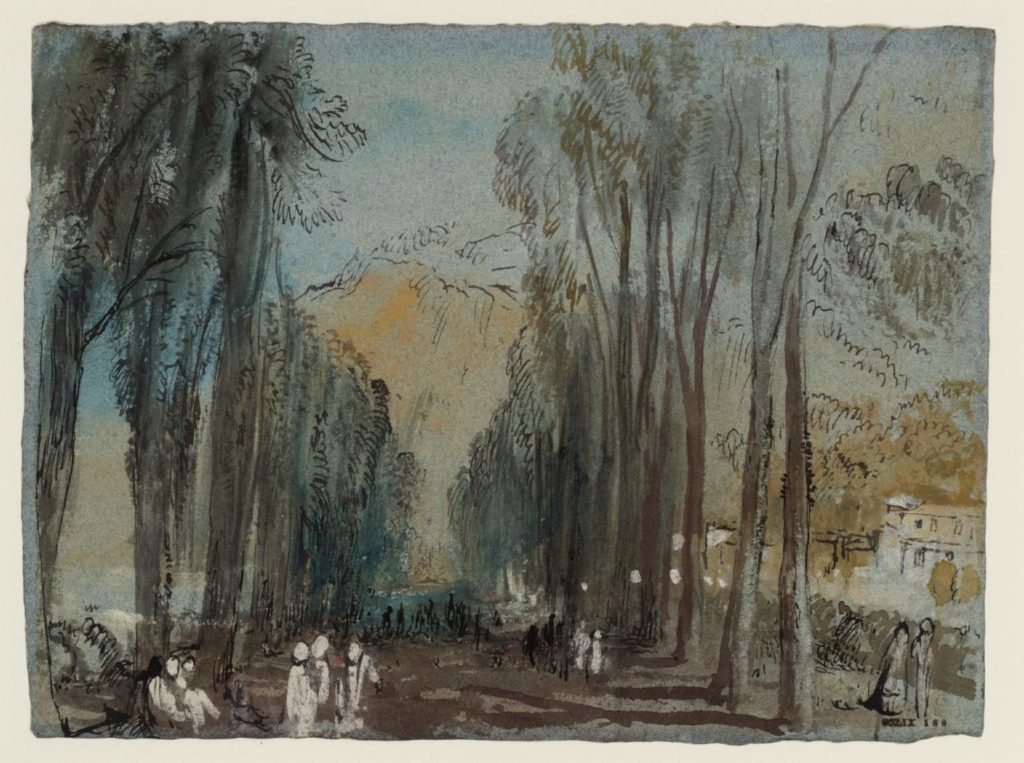
Diary Part Three: August 7th-11th: Spa, Aix, Cologne and Mayence
Diary Part Four: August 14th-24th: Mayence, Darmstadt, Baden, Strasbourg and Schaffhausen
Part C: Switzerland
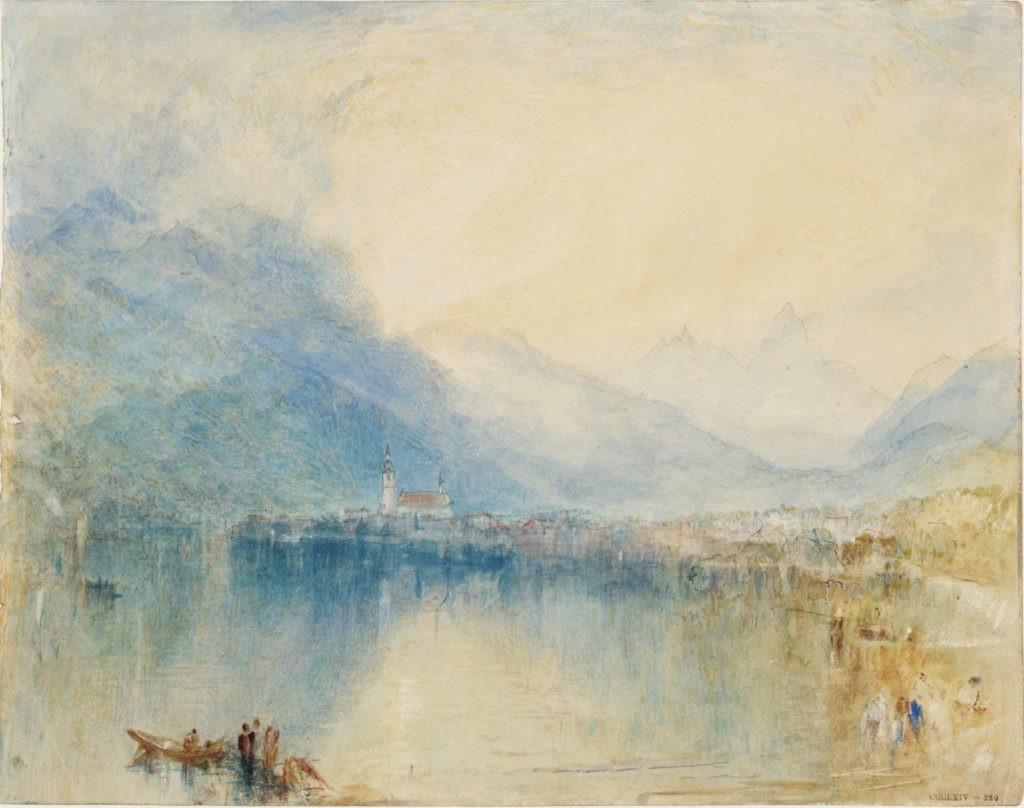
Diary Part Five: August 25th-27th: Zurich: Zug and the Ascent of the Rigi
Diary Part Six: August 28th-30th: Lucerne; Lungen; Brunig and Grundelwald
Diary Part Seven: September 1st-2nd: Passage of the Western Alps, Unterseen and Berne
Diary Part Eight: September 3rd: Berne
Diary Part Nine: September 3rd: Berne (Part Two)
Diary Part Ten: September 3rd to 4th: Berne to Neuchatel
Diary Part Eleven: September 4th to 6th: Lausanne to Geneva
Diary Part Twelve: September 7th to 10th: Trip to Chamonix
Part D: France
